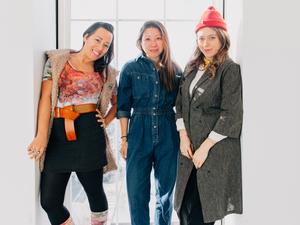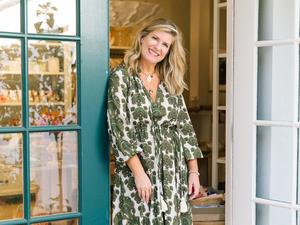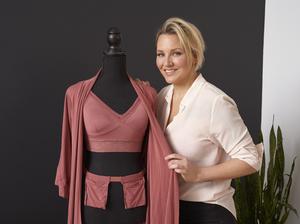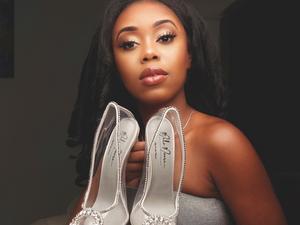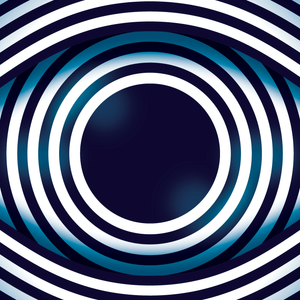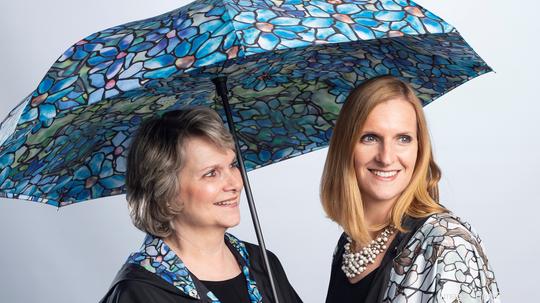
The mother and daughter team behind a Main Line accessories company has tapped into the power of fine art to turn everyday products into something much more.
Their approach to business has seen the company land big deals with the likes of museums and estates such as the Biltmore in North Carolina, leading to steady growth over the past seven years.
Jan Hartman and Lindsay Hagerman launched RainCaper in 2016, tapping into a niche business. The idea for RainCaper came shortly after shuttering their longtime shop Flag Lady Gifts. Based in Wayne, Hartman started the business in 1992 and after 24 years was ready to retire.
Her retirement didn’t last long when an idea began to niggle at her. During her two-plus decades running the shop she heard the dismay customers expressed about rain apparel. They didn’t want a run of the mill jacket.
Using her experience with design and fabric, she created an easy-to-wear cape with rainy weather in mind that could also easily be packed and used on chilly days.
Soon thereafter, Hartman – who began her career in retail at Chicago-based department store Marshall Field – brought samples to the Philadelphia Gift Show where the apparel representatives she’d worked with for years expressed interest.
When Hartman was called away from the trade show for a family emergency, she left the samples behind. Upon her return, she discovered they were in demand.
“[I had] no delivery date, no [stock keeping units], no price, no packaging, nothing. They said they liked them, here are your orders,” Hartman recalled.
Clearly onto something, Hartman and Hagerman – a graduate of the Shipley School and Northwestern University – formally brought RainCaper’s signature piece – and its namesake – to market at the end of 2016. At the time, they offered it in six patterns like polka dots and plaid.
Today the cape comes in closer to 50 designs and retails for $75.95. A subsequent WarmCaper has been added to the mix, too, selling for $84.95.
RainCaper’s target demographic is women, with its core consumer being those 40 years and older who are looking for unique items for themselves or to gift.
More than its signature capes, RainCaper has expanded product offerings, including apparel and accessories like texting-friendly gloves, umbrellas, shawls, totes, hats, stationery, home goods and gifts. In total, RainCaper now has over 500 SKUs.
Still, the capes are a staple and account for about 40% of sales. Other popular items include a long umbrella and a travel umbrella, shawls, and wax LED candles.
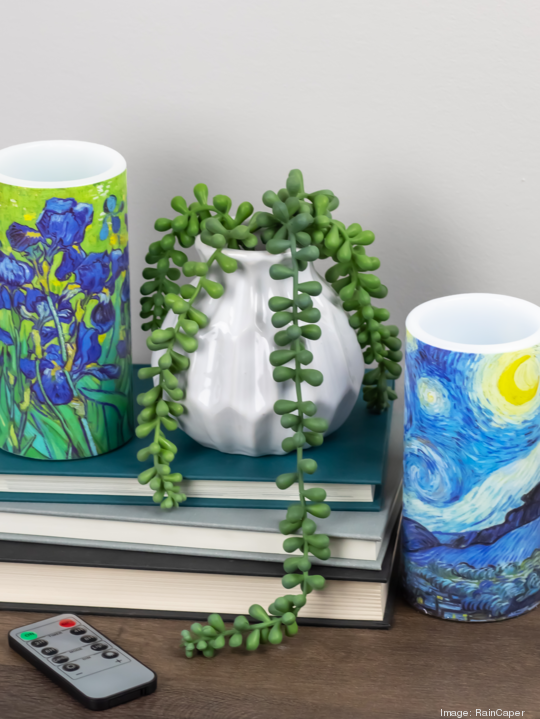
Just as they were onto something with RainCaper, they have also carved out a niche in the business by tapping into making their products with fine art prints.
Shortly after debuting the RainCaper, Hartman made a custom version for herself. It featured the Maurice Prendergast piece “Umbrellas in the Rain,” a 19th century watercolor showing passersby carrying umbrellas on and around the Rialto Bridge in Italy.
The choice of painting wasn’t a coincidence. At the time Hartman’s husband, a researcher, was working on a Prendergast exhibit at the Philadelphia Museum of Art, of which that was a show piece. She wore it to opening night, where the museum’s buyer spotted it and placed an order.
Soon the piece was integrated into RainCaper’s offerings and sold surprisingly well.
“And that was the aha moment. Maybe art is going to have some legs,” Hartman recalled. “And it really, really took off.”
Since 2017, fine art has become a key component in RainCaper’s focus, helping the Wayne-based company tap into a new client base.
RainCaper sells its products to boutiques and independent shops throughout the country, but thanks to the fine art component also partners with museums and historic estates. Business is primarily wholesale driven, with 80% of sales coming from that channel, 15% of which are driven by Museum Store Association sales.
The majority of wholesale comes from independent shops. Locally, RainCaper products can be found at the likes of the Pennsylvania Academy of Fine Arts in Philadelphia, Posh in Bala Cynwyd, and Scarlet Begonias in Flourtown, among others.
The pair said approaching wholesale from their background in retail made it easier, offering “store friendly” policies like easy returns and no pre-packs that didn’t allow for customizing orders.
RainCaper also has an e-commerce component, something they’re looking to grow in the coming years.
To get works of fine art on its products, RainCaper licenses the works or partners with an organization. Its collection includes famous works like Japanese artist Katsushika Hokusai’s “The Great Wave,” Claude Monet’s “Water Lilies” and Vincent Van Gogh’s “Starry Night.” Van Gogh leads sales across all products, followed by Monet.
Hagerman and Hartman have also introduced some modern artists, with a goal of adding more women and diverse creators to the mix. They are working on a forthcoming line by licensing the works of American artist Laurel Burch.
In addition to museums selling existing products in their gift shops, a number have approached Hartman and Hagerman about custom pieces for specific exhibits. For example, RainCaper worked with the Biltmore when it hosted an interactive Van Gogh exhibit from late 2021 to spring 2022 to create products featuring the renowned artist’s works.
It was similarly tasked with providing a selection of products for the Harry Potter exhibit hosted last year at the Franklin Institute in Philadelphia.
The Van Gogh exhibit was a boon for business, equaling the company’s entire volume of Museum Store Association orders combined, or roughly 30%. “I think that was kind of our golden goose year,” Hagerman said. “I was delighted to have it but knew it was not sustainable.”
That massive growth built on what was already a steady increase in sales. Amid the Covid-19 pandemic, the company launched face masks, many with works of art, which buoyed them through what would have been a financially difficult period. Hagerman said each of the past three years – taking the Van Gogh exhibit out of the equation – business grew between 10% and 30%.
Now neither masks nor a massive exhibit are in play.
“This year we're on our own,” Hartman joked.
That gives them a chance to focus on what led them to success in the first place: bringing classic products to market with a new twist.
“My philosophy is I'm going to take a tried-and-true product that is more evergreen and make it beautiful, fix its fatal flaws,” Hartman said.
“We’re not following trends,” Hagerman added.
After all, that’s largely what got them to where they are today.
